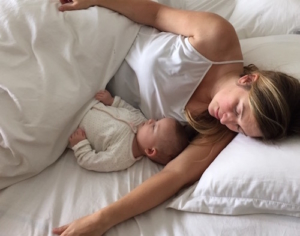
Source: ISIS Co-Sleeping Image Archive
Recently the AAP released an updated safe sleep report and in it, it was stated that bedsharing with an infant under four months of age should be avoided at all times and that if parents feed in bed, they should be “vigilant not to fall asleep”. This second part comes after acknowledging that the risk of bedsharing is less than the risk of falling asleep in a chair or on a sofa, so I’m guessing it’s just a statement to tell families not to sleep for most of the night? Right, seems fair. As someone who looks at the research very closely, I am struggling to see the very strong stance they are taking here, especially when the alternative is, quite frankly, not an alternative at all.
Now, before I begin, I want to make the following points:
- No one is saying you have to bedshare. The question is if recommendations should continue to be “no” at all costs versus giving parents the best information and working with them on a case-by-case basis as to what is safe. Especially for breastfeeding dyads.
- We cannot ignore that cross-culturally bedsharing is common, and common in places with far lower SIDS and sleep-related deaths than the USA. There are very real cultural issues that come into play when we talk about nighttime care for babies. For a far fuller look into this, I strongly recommend reading Cecilia Tomori’s book Nighttime Breastfeeding: An American Cultural Dilemma.
- We also cannot ignore that bedsharing looks very different in many of these countries. For example, in Japan, futons and sleep surfaces are low to the ground and very firm, and although smoking rates for men are very high, they are lower for women (who are presumably sleeping closer to baby).
- Smoking and bedsharing is consistently found to be the worst possible mix for babies, but there are also other factors that make up “safe bedsharing” and these don’t often get considered. This is something I will discuss in more depth below.
- Breastfeeding is an important factor as the AAP also has public health campaigns to breastfeed yet, as pointed out, it seems they are telling families that they need to breastfeed while awake for the first four months of a child’s life. Now, if you’ve breastfed a baby, you will know that that likely means not sleeping very much for the first four months as babies feed a lot during this time. This can mean going off breastfeeding early, or ending up in very dangerous bedsharing situations where Mom is overtired and now bringing baby to a bed that is not set up for safe bedsharing. This is not only not feasible, but in my opinion, downright negligent to tell parents.
There, a bit of background for you. Now, onto the issue at hand.
What evidence does the AAP use for suggesting bedsharing should always be avoided under four months of age?
They cite six studies that claim there is heightened risk regardless of smoking status, the leading risk factor for bedsharing. Now, five of these
- In the re-analysis, the authors used the comparison group as female only, who naturally have a lower risk for SIDS, but as sex is a non-modifiable risk factor, it would have been better to include males and female controls for comparison purposes.
- In the re-analysis, the authors imputed data that shouldn’t have been imputed. This means that there was missing data in the original files on certain variables (in some cases, entire variables were missing) that was then estimated for the new analysis. This is actually a normal procedure, but the way in which it was done here – using estimates from different countries with different base rates – was incorrect.
- The studies themselves suffered flaws with respect to the measurement of many variables and the omission of others. I have gone into a lot of details here on that issue and I recommend reading that piece if you’d like to better understand the issues surrounding the research that has been done to date.
So in five of the six, I would say that there are enough methodological issues that make a blanket recommendation against bedsharing problematic as opposed to a more nuanced message of safe bedsharing on a case-by-case basis, especially for breastfeeding mothers.
The sixth study[7] did find that bedsharing per se was risky for children under four months, but it is unclear how this would play out when other variables were controlled for. You see, these authors found that when specific variables related to bedsharing were considered in a restricted analysis—specifically smoking, recent maternal alcohol consumption of greater than 2 units, use of duvets greater than 4 togs, parental tiredness defined as the infant sleeping less than 5 hours for the longest sleep in the previous 24 hours, and overcrowded housing conditions—the overall risk of bedsharing was non-significant. However, it could be that this was due to a move towards protection in older infants (it was already non-significant in infants over 14 weeks regardless of other variables) or simply a reduction in the univariate risk in younger infants. Notably, it is hard to assess the real effect smoking in this group as over 90% of parents of babies who died of SIDS were smokers, leaving a very small sample of those who do not smoke. When restricted analyses were performed comparing those who bedshared and didn’t smoke to controls, there was no increased risk of bedsharing across all ages.
(Note that the initial multivariate analysis does show an increased risk of bedsharing after controlling for an even greater number of variables; however, the authors found that many of these were specific to the cot environment and thus did not reflect bedsharing risk and thus a restricted multivariate model focusing on bedsharing was run. The reason that one might see a high risk in a multivariate model where irrelevant variables were included is that some of the variables may actually differentiate cot versus bedsharing deaths without being causal, such as infant age, illness, and so on, and thus their inclusion creates a spurious increased odds ratio for bedsharing.)
Thus, the research as it stands certainly doesn’t support a carte blanche on bedsharing, but also does not speak to a strict stance against it when we look at the evidence as a whole. Even under four months of age.
What about breastfeeding? Isn’t it supposed to be protective?
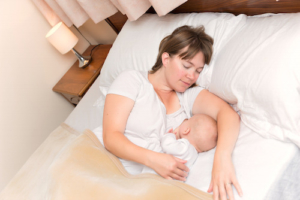
Source: ISIS Co-Sleeping Image Archive
The issue of breastfeeding is one that many people rightfully discuss alongside bedsharing because the two are so intricately intertwined, especially in the early months when mothers are attempting to get their supply going and maintained and babies are supposed to be feeding on-demand. We have research that supports the notion that breastfeeding mothers are more likely to bedshare as it makes breastfeeding and sleeping easier for them[8]. We also know that not breastfeeding increases the risk of SIDS[9], and that this risk increases with the amount of formula use[10].
In this case we might think the AAP decided that breastfeeding might be one of the factors that would mitigate the risk of bedsharing in those infants under four months (if we accept there’s an inherent risk), but as we know, they did not. This was thanks to one case-control study out of the Netherlands[11] which states that bedsharing is a risk factor for SIDS regardless of breastfeeding status. This would be contrary to Dr. James McKenna’s notion of “breastsleeping” which rightly posits that bedsharing and breastfeeding go hand-in-hand from a biological or anthropological perspective. So how strong is this evidence?
Now, before I get into this study, I have to be clear that there were elements of their analyses that weren’t clear in their write up. I attempted to contact the lead researcher with my questions and did not hear back, thus I am left with analyzing this study with incomplete data (so to speak). I will discuss my questions here and how different answers would influence the findings.
What did this study look at and actually find?
The study itself looked at ten years’ of data on SIDS in the Netherlands and compared these deaths to controls. There were a total of 138 “cot deaths” (the term the researchers use) in infants less than six months of age and a group of 1628 infants were included as controls. In the cot death group, 25% of infants died while bedsharing and nearly 25% of those were not accustomed to bedsharing, meaning that 20% of infants who died were regular bedsharers. This is in contrast to the reported norms of an average of 9.4% in that age range.
Now, the authors claim that breastfeeding is not a possible confounder based on the finding that an interaction between breastfeeding and bedsharing was nonsignificant. In fact, the odds ratio for cot death based on bedsharing slightly increased when breastfeeding was controlled for. Notably, breastfeeding itself reduced the risk of cot death by a factor of 2.7, after controlling for age of baby, bedsharing, and smoking status. The odds of an infant dying of SIDS while bedsharing, after controlling for these same variables, was 9.1 times greater at 1 month, 4.0 times greater at 2 months, 1.7 times greater at 3 months, and non-significant at 4-5 months. These values were not statistically different after breastfeeding status was included in the model.
It would seem, based on these findings, that breastfeeding does not alter the risk of bedsharing at any time point, even though it is protective in and of itself. So why would I question it? It comes down to…
What were the research questions that I had?
Question 1: How does the assessment of breastfeeding affect findings?
Based on supplemental data, we know that for bedsharing SIDS families 19% had started exclusive formula feeding compared to 42% for non-bedsharing SIDS families and 24% of control families. First, we have no data on exclusivity of breastfeeding in any group, just exclusive formula use versus any breastfeeding. Given that we know exclusivity affects the degree of reduction of risk of SIDS (their terminology, not mine as breastfeeding is the biological norm and thus doesn’t reduce the risk of anything)[10], this is highly relevant. If, for example, the control group has a greater number of bedsharing and exclusive breastfeeding families, then this would provide an interaction term that supports exclusive breastfeeding as a mitigating factor. This is probably unlikely, but worthy of discussion as the breakdowns could affect results.
Second, we are left with a statistical problem of a forced dichotomy that is missing information in the underlying distribution. Now, this happens often in research and is a problem when it comes to understanding the effects of breastfeeding more generally, as I have discussed here. At the very least, having a trichotomous variable (exclusive breastfeeding, mixed, exclusive formula) would be the bare minimum to test for the interactions and preferably dividing the mixed category into “predominantly breast” and “predominantly formula” would be good too. Of course, we also need to assume the underlying distribution is normal, something it likely isn’t. Because of this, the better method would have been to run a restricted analysis separating the breastfeeding and exclusive formula feeding groups to determine if the odds-ratio of bedsharing was equal in each group.
Looking back to [7], we can see how this alters things. The original multivariate analysis found that bedsharing was a risk after controlling for a multitude of variables, but when the restricted analyses were run that focused on the relevant variables at hand and looking at risk by smoking and bedsharing status, the risk disappeared. In this study, both the missing underlying data on breastfeeding and possible spurious correlations with other variables (like breastfeeding and smoking, which look like they could be positively correlated based on the summary data, especially in the SIDS groups) may be affecting the results.
However, the low rates of formula use in the bedsharing SIDS group does tell us why there was no interaction in the original analysis: the bedsharing group consisted of a lot of smokers and a lot of breastfeeders. The fact that the odds ratio increased slightly when breastfeeding was added to the mix suggests that many of the smokers were breastfeeders as well, which brings me to…
Question 2: How many bedsharing families were breastfeeding and not smoking?
When I look at the breakdown of the data, there is a disproportionate amount of smokers in the bedsharing SIDS group with 53% of mothers smoking, 61% of fathers smoking, and 67% of families with at least one smoker (most with two). This is in comparison to the control group in which 20% of mothers and 32% of fathers smoked, and 39% of families had at least one smoker. Now, 81% of bedsharing SIDS families were breastfeeding of some kind so the question is: how many were both breastfeeding and smoking? Given the high rates of smoking in this group, could breastfeeding “overcome” the smoking, so to speak? Again, here is where a restricted analysis – or at least some breakdown of the data – would be helpful to better understand what’s happening. It is possible that for families who do not smoke and bedshare and breastfeed, the risk of bedsharing disappears. It could even be that the risk of smoking and bedsharing is less when breastfeeding than when not. Or none of it may matter and the risk for bedsharing is equal in all of these groups. The problem is that without this breakdown, we just don’t know and can’t know based on the data provided.
Question 3: What about other variables?
The researchers had access to at least one other variable that is regularly found to be at play in SIDS: the use of bedding. In this study, 72% of bedsharing SIDS families used a quilt compared to 16% of controls. In other research tog value (the unit of measure for thermal resistance) has been found to be a huge risk factor for SIDS[4][7] and duvets and the like have higher tog values. Unfortunately, if this was included in the analyses, it was not reported on. Yet, given the data at hand, I can say the univariate odds-ratio is 13.68, greater than the highest risk of bedsharing. Furthermore, 64% using a pillow for baby in the bedsharing SIDS group compared to 2% of controls, resulting in an odds-ratio of 88.24, a ridiculously high number based on the very low percentage of pillow-use in the control group. The question I have is if these were included in the analyses, how did they influenced the findings as nothing is reported on these variables at all? If they weren’t included, why not?
It is worth pointing out that because I calculated the odds-ratio by hand based on summary data available to me, I could not control for the other SIDS cases or other variables. This was a comparison between the SIDS-bedsharing group and the control group only.
Question 4: Is the assessment of bedsharing accurate?
I don’t know the cultural views on bedsharing in the Netherlands well enough to know if families would be honest about their bedsharing practices when asked by their pediatrician. Yet this is how the control group data was determined: A survey given by their pediatrician in a “Safe Sleep” survey. I do know that in North America, when the question is asked anonymously or as part of a survey not administered by a doctor, the rates of bedsharing are much higher than the official numbers that come from doctors’ offices[12][13].
Why does this matter? The entire premise of bedsharing being unsafe stems from different rates in the SIDS and control groups. If the control group rates are artificially low due to pressure to report otherwise, then we are overestimating the risk of bedsharing across all analyses. If, however, there is no such pressure and people are accurate, it’s not really much of a concern.
Question 5: Why were people bedsharing?
As we don’t actually know the etiology of SIDS, we should be asking why families are bringing their babies to bed with them. It is possible that some of the cases are because of an underlying vulnerability resulting in behaviours like sleep apnea or excessive crying that lead the families to choose bedsharing. It may be that breastfeeding was of primary importance and they didn’t see an alternative to bedsharing to the feeding demands of their babies. Asking the question “Why?” is always of the utmost importance if we want to make blanket recommendations against a practice. Unfortunately, based on the high rates of things like smoking and use of a quilt, it would seem that safe bedsharing is not being taught and thus not followed.
And finally…
Question 6: How many cases had no known risk factors for bedsharing?
As we learned when Alaska did a full examination of their SIDS and suffocation infant deaths, the number of bedsharing deaths with no known major risk factors was one over a 12-year period[14]. This is one of the most important areas of exploration because it can tell us what modifiable factors we can work on with families. Given that these doctors see bedsharing as a modifiable factor (one they’d like to modify), but one that isn’t going away thanks to cultural and biological roots, we need to start looking at the modifiable factors that make bedsharing risky so that we can focus our education efforts in that area. Just as they did with the Back to Sleep campaign. That, however, requires the type of detail that was not provided in this study.
So what’s the conclusion?
Based on the evidence we have, it does not seem clear that bedsharing under four months of age is inherently safe or dangerous. Looking at the various studies out there, it seems that the risk is certainly higher for younger infants when we don’t consider known modifiable variables, but does that mean that it’s higher when they are controlled for? That remains to be seen.
The role of breastfeeding is particularly interesting because “breastsleeping” is the biological norm for human beings. Of course we live in a culture that will deviate from this for many reasons and we also live in a culture where there are greater hazards to bedsharing due to our use of things like soft beds, duvets, lots of pillows, and so on. However, these hazards are not necessary when it comes to bedsharing and if we can focus education on modifying these practices, we may be able to see the decrease in bedsharing SIDS cases that anti-bedsharing and bedsharing folks alike are eager to see. Also, when we are talking about breastfeeding and bedsharing, we need to be very clear about what the alternative is. Currently, the AAP hasn’t really offered any viable alternative to families if breastfeeding is important to them. Instead of focusing on the knowledge that breastfeeding is protective and thus looking at modifiable bedsharing factors to help increase safe sleep, they are putting babies at risk by suggesting the only alternative is to stay awake while feeding.
One final note: There is a distinct difference in the SIDS factors for bedsharing and non-bedsharing families in the research from the Netherlands. First, bedsharing deaths occurred at a much younger age, with 86% of cases occurring in the first three months and the remaining 14% between three and four months. There were no bedsharing SIDS cases after four months of age (in contrast, only 19% of non-bedsharing SIDS cases were in the first three months, 27% between three and four months, and 54% after four months of age). Second, non-bedsharing SIDS cases were more likely to be male whereas that was not the case for bedsharing SIDS cases. Finally, there were differences in formula use (more likely in non-bedsharing cases), smoking (more likely in bedsharing cases), and the use of bedding (more likely in bedsharing cases). These things speak to a real need to approach our understanding of and research on the etiology of SIDS as perhaps two separate influences.
____________________________
[1] Carpenter RG, Irgens LM, Blair PS, et al. Sudden unexplained infant death in 20 regions in Europe: case control study. Lancet 2004;363:185–191. [2] Tappin D, Ecob R, Brooke H. Bedsharing, roomsharing, and sudden infant death syndrome in Scotland: a case-control study. J Pediatr 2005;147:32–37. [3] McGarvey C, McDonnell M, Chong A, O’Regan M, Matthews T. Factors relating to the infant’s last sleep environment in sudden infant death syndrome in the Republic of Ireland. Arch Dis Child 2003;88:1058–1064. [4] McGarvey C, McDonnell M, Hamilton K, O’Regan M, Matthews T. An 8 year study of risk factors for SIDS: bed-sharing versus non-bed-sharing. Arch Dis Child 2006;91:318–323. [5] Vennemann MM, Hense HW, Bajanowski T, et al. Bed sharing and the risk of sudden infant death syndrome: can we resolve the debate? J Pediatr 2012;160:44–48, e42. [6] Carpenter R, McGarvey C, Mitchell EA, et al. Bed sharing when parents do not smoke: is there a risk of SIDS? An individual level analysis of five major case-control studies. BMJ Open 2013;3:e002299. [7] Blair PS, Fleming PJ, Smith IJ, et al; CESDI SUDI Research Group. Babies sleeping with parents: case-control study of factors influencing the risk of the sudden infant death syndrome. BMJ 1999;319:1457–1461. [8] Ball H, Howel D, Bryant A, Best E, Russell C, Ward-Platt M. Bed-sharing by breastfeeding mothers: who bed-shares, and what is the relationship with breastfeeding duration? Acta Paediatrica 2016; 105: 628-34. [9] Ip S, Chung M, Raman G, Trikalinos TA, Lau J. A summary of the Agency for Healthcare Research and Quality’s evidence report on breastfeeding in developed countries. Breastfeed Med 2009;4:S17–S30. [10] Hauck FR, Thompson JM, Tanabe KO, Moon RY, Vennemann MM. Breastfeeding and reduced risk of sudden infant death syndrome: a meta-analysis. Pediatrics 2011;128:103–110. [11] Ruys JH, de Jonge GA, Brand R, Engelberts AC, Semmekrot BA. Bed-sharing in the first four months of life: a risk factor for sudden infant death. Acta Paediatrica 2007;96:1399-1403. [12] Ateah CA, Hamelin KJ. Maternal bedsharing practices, experiences, and awareness of risks. Journal of Obstetric, Gynocologic, & Neonatal Nursing 2008; 37: 274-81. [13] Colson E. Presentation at the Pediatric Academic Societies meeting in Vancouver, BC, 2014. [14] Blabey MH, Gessner BD. Infant bed-sharing practices and associated risk factors among births and infant deaths in Alaska. Public Health Reports 2009; 124: 527-34.
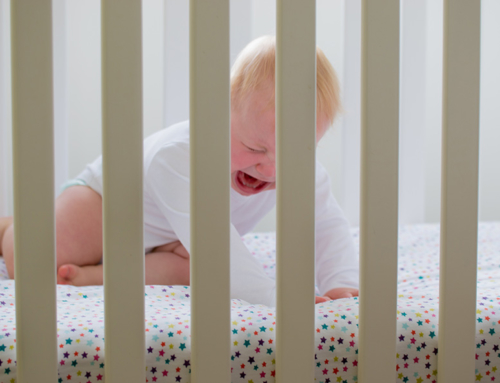


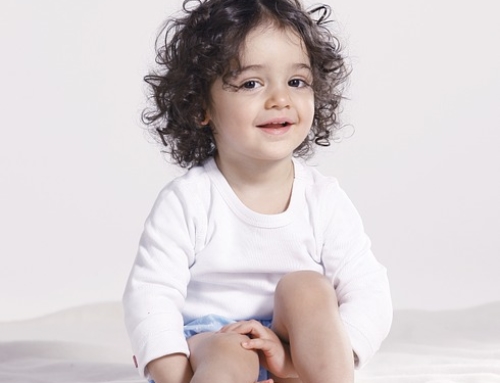
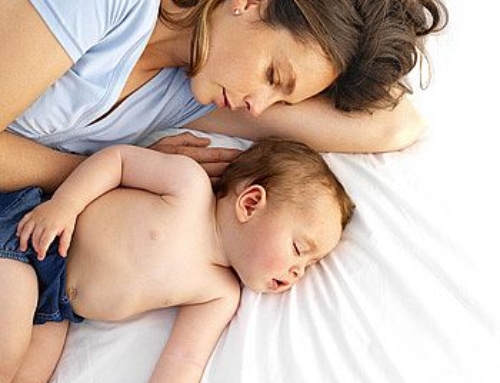
Tracy, thank you for planting a BIG seed of doubt about those 6 studies to substantiate the AAP’s point on bedsharing. I realize that there are still many questions to be answered here, but honestly, I believe it’s only a matter of time until we realize that these “dangers” are unproven. Thanks, too, for coming on my radio show, Born to Be Breastfed, earlier this year. I am writing a blog that will publish at the end of December, and I’m mentioning the two shows we did together, as well as the show I did with Cecilia Tomori. I think the two of you are RIGHT ON!
I love reading your posts. Thank you for your work!
Thank you!
Thanks for this article Tracy. 🙂
As a scientist and a new mother, I can’t believe it has taken me nearly 5 months of near constant wading through everything the internet has to offer in order to find some discussion of parenting issues that is ACTUALLY evidence based.
Thank you for writing a blog that is a real breath of fresh air amongst the literal hundreds of “scientific” parenting approaches.
I was reading Magda Gerber’s book (I have been reading as much as I can, *critically*, out of interest and sheer disbelief at the amount of readily available and hugely conflicting advice out there), which led me to look up critiques of the RIE approach and yours was the first to pop up. I ended up reading several more of your blog posts and have found them all to be well-researched and refreshingly aligned with my own approach.
Of course, I’ll try not to embrace this blog with the evangelical zeal that many seem to bring to their chosen parenting philosophy. However, I will continue to read and thank you again for your balanced and well researched articles.
Thank you so much 🙂
I’m confused as this analysis focuses on the impact of bed sharing on SIDS, but ignores or at least does not distinguish between SIDS and accidental suffocation. Are you lumping these risks together when discussing whether bed sharing is “safe” vs “dangerous”? Or are you isolating SIDS specifically and ignoring accidental suffocation?